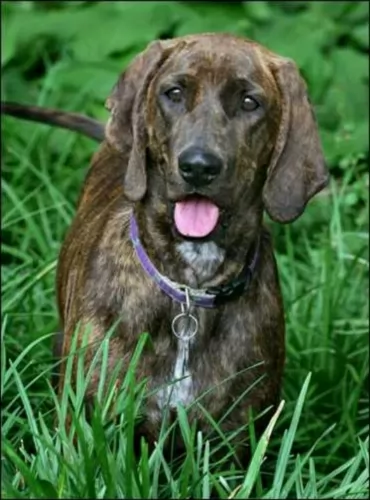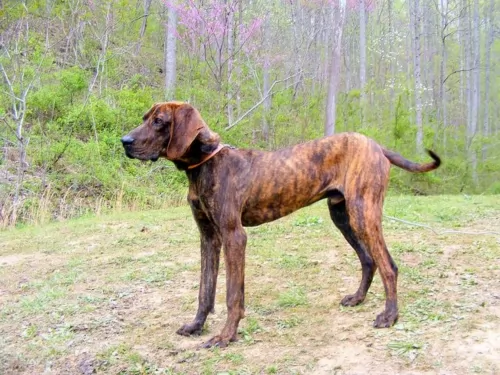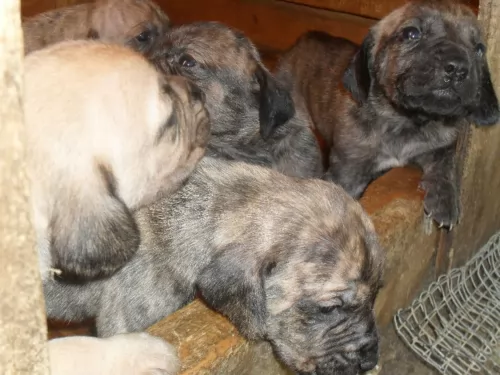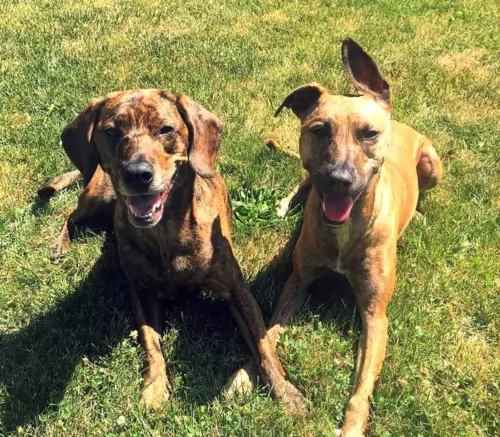 MyDogBreeds
MyDogBreeds Plott Hound is originated from Germany but Australian Stumpy Tail Cattle Dog is originated from Australia. Plott Hound may grow 20 cm / 8 inches higher than Australian Stumpy Tail Cattle Dog. Both Plott Hound and Australian Stumpy Tail Cattle Dog are having almost same weight. Both Plott Hound and Australian Stumpy Tail Cattle Dog has almost same life span. Plott Hound may have more litter size than Australian Stumpy Tail Cattle Dog. Plott Hound requires Low maintenance. But Australian Stumpy Tail Cattle Dog requires Moderate maintenance
Plott Hound is originated from Germany but Australian Stumpy Tail Cattle Dog is originated from Australia. Plott Hound may grow 20 cm / 8 inches higher than Australian Stumpy Tail Cattle Dog. Both Plott Hound and Australian Stumpy Tail Cattle Dog are having almost same weight. Both Plott Hound and Australian Stumpy Tail Cattle Dog has almost same life span. Plott Hound may have more litter size than Australian Stumpy Tail Cattle Dog. Plott Hound requires Low maintenance. But Australian Stumpy Tail Cattle Dog requires Moderate maintenance
 The Plott Hound is a scent hound who has always been used for for hunting bears. The dog may well be the state dog of North Carolina, but it isn’t well known.
The Plott Hound is a scent hound who has always been used for for hunting bears. The dog may well be the state dog of North Carolina, but it isn’t well known.
The Plott Hound is an old dog breed descending from several Hanoverian Schweisshunds which were brought to North Carolina way back in 1750. They were brought by a German immigrant, Johannes George Plott, and that is why it is believed that the dog hails from Germany.
It is believed that in the early 1900s the dog was mated with black-and-tan hounds, giving the canine additional scenting skills as well as its black-saddled brindle pattern. The dog breed has since been registered by the United Kennel Club and is also registered by the American Kennel Club.
 There is quite a bit of mystery surrounding the origin of the Stumpy Tail Cattle Dog. The breed was developed as a working dog to herd sheep and cattle, but there are quite a few theories about the development of the breed. It is agreed however, that the dog was developed in Australia and came about from crossing the Australian Dingo and British herding dogs.
There is quite a bit of mystery surrounding the origin of the Stumpy Tail Cattle Dog. The breed was developed as a working dog to herd sheep and cattle, but there are quite a few theories about the development of the breed. It is agreed however, that the dog was developed in Australia and came about from crossing the Australian Dingo and British herding dogs.
Perhaps the most popular theory for the origin of the Australian Stumpy Tail Cattle Dog is that the breed was developed by a man named Timmins, sheep drover and a cattle operating in New South Wales during the colonial period. Whatever the dog’s origins, it was in 1996 that the United Kennel Club, the 2nd largest dog registry in the world and the United States, granted full recognition to the Stumpy Tail Cattle Dog as a member of the Herding Group. The breed’s name was changed to the Australian Stumpy Tail Cattle Dog in 2002. Today he remains almost exclusively a tail-less working dog.
 The Plott Hound is a large dog standing between 50 and 71cm in height, both male and female, and weighing in at between 18 to 27kg.
The Plott Hound is a large dog standing between 50 and 71cm in height, both male and female, and weighing in at between 18 to 27kg.
The dog’s coat is available in a number of brindle shades such as red-, blue, tan-, brown and black brindle. The ears of the dog are long and floppy and the tail is also long and held up or down, depending on whether the dog is quiet or excited. He is active and would not be recommended for a small homes in the city.
Bold, alert and intelligent, the Plott Hound is a confident, courageous and loyal pet, being somewhat aloof around strangers.
Typical of any hounds, he is a strong willed, independent dog, and this is why he will need training and socialization. These make him obedient so that he can respond to simple commands such as sit, lie down, come and stay. This makes him a pleasure to have around wherever you go with him. He is also protective, making him an excellent watchdog.
 An interesting fact about the Australian Stumpy Tail Cattle Dog is that he is naturally tail-less so no tail docking has been required for this naturally bobtailed dog. He is medium-sized to large-sized with his most distinctive feature being the lack of a tail. The coat of the dog is short to medium length, dense and straight. Another interesting aspect is that the coat color is a speckled blue or speckled red.
An interesting fact about the Australian Stumpy Tail Cattle Dog is that he is naturally tail-less so no tail docking has been required for this naturally bobtailed dog. He is medium-sized to large-sized with his most distinctive feature being the lack of a tail. The coat of the dog is short to medium length, dense and straight. Another interesting aspect is that the coat color is a speckled blue or speckled red.
Height of the dog is 46–51 centimetres at the withers the dog is normally squarely proportioned with long legs and pricked ears. The dog has no exaggerated features and what you see is what you get – a plain, hard-working dog which is fit and muscular. He is equally long from chest to rump as he is from the ground to the shoulder.
The muzzle of the dog is of average length, but fairly broad and the nose is always black. The dog is intelligent, alert and also mischievous and he makes a good pet. With proper socialization, he’ll get on well with children they know and who treat them with kindness. He is alert and makes a very good watchdog, being fairly territorial.
 The Plott is a bold, aggressive type of dog, but he is also loving, loyal and intelligent.
The Plott is a bold, aggressive type of dog, but he is also loving, loyal and intelligent.
If you want him as a pet and companion, another bonus part is that his smooth, short coat makes him a low maintenance breed. He’s good looking too, and with training and socialization he’s going to make a great family friend, guardian and pet.
 The Australian Stumpy Tail Cattle Dog is a hardy dog, capable of hardships that would take its toll on other dog breeds. He is a wonderful athlete and if you’ve got him working with your livestock, he’ll tirelessly perform his duties – small wonder he is so valued in the Australian cattle industry.
The Australian Stumpy Tail Cattle Dog is a hardy dog, capable of hardships that would take its toll on other dog breeds. He is a wonderful athlete and if you’ve got him working with your livestock, he’ll tirelessly perform his duties – small wonder he is so valued in the Australian cattle industry.
If you’re looking for a robust breed who will have all the energy needed to accompany you on all your adventures, he won’t disappoint. He is amazingly capable and always willing.
He’s a family dog and will be loving, devoted and loyal. Care should be taken with him around small children and other pets as he’s not to comfortable around them and he doesn’t tolerate strangers too well either. Train him and socialize him and you’ll have an amazing friend for life.
 Your Plott Hound is a healthy dog breed and can live to be anything from 12 to 14 years of age. Just like with any other dog breed, they are prone to certain health conditions. It is however, highly unlikely that he will get any of the diseases, but it is good to be aware of some of them -
Your Plott Hound is a healthy dog breed and can live to be anything from 12 to 14 years of age. Just like with any other dog breed, they are prone to certain health conditions. It is however, highly unlikely that he will get any of the diseases, but it is good to be aware of some of them -
There are many forms of cancer and some of the symptoms of the disease include lumps, sores that won’t heal, difficulty with breathing, lack of energy and black stools. Cancer is of course life threatening and treatments will include the likes of chemotherapy, radiation and even surgery.
This is also a deadly disease where parasites infect a dog’s heart and arteries. With a mosquito bite, dogs are exposed to larvae, and if left unchecked, the larva can develop into large worms. Your dog will be coughing, be lethargic and in a run down state. This disease certainly requires veterinary intervention.
There are so many things that can cause your dog to vomit and also have diarrhea. Eating the wrong foods, having an infection such as parvo for instance can cause a dog to vomit. An isolated case of vomiting needn’t be cause for alarm, but if your dog is vomiting repeatedly, you’ll need to get him to the vet.
This is more common in small dogs, but big dogs can easily become obese too. Being overweight has a host of negative health effects on your dog such as opening up diseases such as diabetes and putting too much stress on the joints.
 The Australian Stumpy Tail Cattle Dog is regarded as being an extremely healthy breed, and the average life expectancy of this breed is at least 14 to 15 years and older.
The Australian Stumpy Tail Cattle Dog is regarded as being an extremely healthy breed, and the average life expectancy of this breed is at least 14 to 15 years and older.
They don’t suffer with many genetically inherited conditions, but they are susceptible to
 The Plott is a hunting dog, used to being outside and used to being active and busy. For anyone who can satisfy his need to be busy, he’ll make a fantastic pet, companion and watchdog. Provide him with a variety of activities to keep him occupied – a walk, ball games, runs in the park, swimming and hikes.
The Plott is a hunting dog, used to being outside and used to being active and busy. For anyone who can satisfy his need to be busy, he’ll make a fantastic pet, companion and watchdog. Provide him with a variety of activities to keep him occupied – a walk, ball games, runs in the park, swimming and hikes.
Your Plott Hound has a short coat which sheds. He is regarded as a low maintenance dog and will require a brush twice a week. A rubber curry will keep the coat gleaming.
Check inside his ears for redness which can be indicative of an ear infection. Check his eyes too and make sure they are bright, clear and alert.
Trim your pet’s nails.
If you don’t intend to go in for breeding, have your dog neutered or spayed to avoid unwanted pups.
Provide your dog with a nice warm, dry place to sleep. When he goes outside, ensure he has both shade and sunshine to lie down in.
Make sure you feed your Plott Hound high quality food to promote longevity and good health. There are some commercially manufactured dog foods that have bad ingredients in them which can actually make your pet sick. Buy a quality food, and try to add in some homemade food too from time to time. You don’t have to make feeding your dog a complicated affair – some chopped up boiled chicken, brown rice or pasta and some vegetables such as sweet potato, carrots and spinach will keep your pet healthy and happy. You can add it into his kibble once in a while for a treat and also give him a little bit of raw meat occasionally. Easy, simple and nutritious – just like your pet wants. He doesn’t want you popping chocolate, raisins, peanuts, coffee and spicy foods into his mouth or bowl as it upsets his stomach.
Make sure he always has access to fresh, cool water.
 The beauty about the Australian Stumpy Tail Cattle Dog is that he is low to moderate maintenance. He will require a good weekly brushing as he can shed quite a bit when the season’s change and his new coat comes in. He is hypoallergenic.
The beauty about the Australian Stumpy Tail Cattle Dog is that he is low to moderate maintenance. He will require a good weekly brushing as he can shed quite a bit when the season’s change and his new coat comes in. He is hypoallergenic.
Australian Stumpy Tail Cattle Dog puppies will need 4 bowls of food over a 24 hour period Puppies from 6 months on can have 2 bowls a day. Speak to your vet about the best foods for your dog and ensure fresh, cool water is constantly available to your pet.
Don’t just feed your dog pellets continuously – mix in some raw meat and some cooked chicken and rice for variety and to ensure a shiny, glossy coat.
The Stumpy is a hugely energetic dog and he will become bored and frustrated if he doesn’t get plenty of exercise and games. Ball throwing, swimming, long walks and a run in the park will be important for the Stumpy that doesn’t live on a farm. Leaving him alone without exercise will lead to anti-social behaviour such as continuous barking, digging and chewing.
Take your Stumpy to the vet if you suspect health problems. Certainly, when you buy a puppy, make sure that he has all his vaccinations. There are certain health problems that are more common in the Australian Cattle dog and you want to do whatever it takes to ensure your dog steers clear of them.